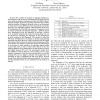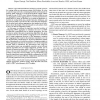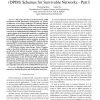146 search results - page 28 / 30 » The Social Dynamics of Pair Programming |
106
click to vote
BIBM
2008
IEEE
15 years 7 months ago
2008
IEEE
Network alignments are extensively used for comparing, exploring, and predicting biological networks. Existing alignment tools are mostly based on isomorphic and homeomorphic embe...
108
click to vote
BIBE
2007
IEEE
15 years 7 months ago
2007
IEEE
Abstract—We consider the problem of aligning multiple protein sequences with the goal of maximizing the SP (Sum-of-Pairs) score, when the number of sequences is large. The QOMA (...
140
click to vote
ATAL
2005
Springer
15 years 6 months ago
2005
Springer
Reinforcement learning problems are commonly tackled with temporal difference methods, which use dynamic programming and statistical sampling to estimate the long-term value of ta...
124
click to vote
INFOCOM
2002
IEEE
15 years 6 months ago
2002
IEEE
—Open Shortest Path First (OSPF) is a popular protocol for routing within an autonomous system (AS) domain. In order to scale for large networks containing hundreds and thousands...
103
click to vote
INFOCOM
2002
IEEE
15 years 6 months ago
2002
IEEE
—This paper describes a novel framework, called Distributed Partial Information Management (or DPIM). It addresses several major challenges in achieving efficient shared path pr...



